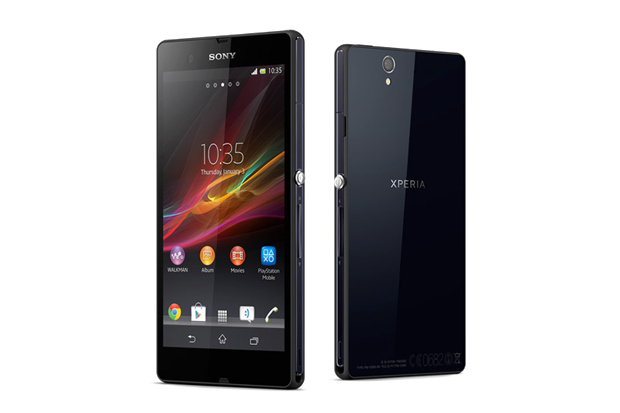Sony has put out a phone that knows exactly what it wants to be. Sony wants to be a player, it wants to be established, and for that it needs to be seen as a stable and worthy manufacturer. The Xperia S proved that Sony could build a good phone, the Xperia T showed an iterative approach and a new found confidence in styling and advertising, and the Xperia Z is a handset that delivers everything you expect, has the style, and gives you the confidence it will not be out of date in six months time.
Which is good, because Sony has run out of model letters at the end of the alphabet.
Sony’s latest Android handset, announced at CES 2013 and reaching a number of markets during February this year, is an impressive continuation of Sony’s Android line of smartphones. While it is not the Android device to rule over all other Android devices, it shows a steady progression from Sony’s first Android handsets last year. The Japanese company know how to build up all the elements of a solid smartphone. While I might lack a spark that makes it special, it’s capable and dependable handset that I can recommend.
Naturally the recently announced Samsung Galaxy S4 sneaks ahead in the spec stakes, but that’s about the only phone that does. Compared to the other flagship handsets around the smartphone the world, the Xperia Z is in the top class with a 1.5 GHz Quad Core CPW, an Adreno 320 GPU, and 2 GB of Ram. Perhaps the sole memory option (at 16 GB) is a bit weak, but microSD cards are supported for extra storage.
At 5 inches on the diagonal the screen is a delight. Powered once more by Sony’s ‘Bravia Engine 2′ it is a sharp 1080p display that smashes through Apple’s definition of a retina screen with 440 pixels per inch. One sacrifice for that density might be in the viewing angle, with colours starting to fade at a relatively small amount of angle, although information does remain readable. It’s more than enough for one person to cope with on a jostling train or jogging down the street, but with the 5 inch HD screen you would expect to be sharing videos at some point in time.
The battery is sealed into the handset, and while it has a high capacity (2,400 mAh), the screen along with the 4G LTE radios will place a lot of demand on the power source. Thankfully Sony has worked on the software so that the handset can easily get through the day. This comes down to the ‘Stamina’ mode, which in essence is a strict guardian of power. If the phone’s screen is off, then background tasks are going to be suspended, data transmissions limited, and the phone will try to draw as little power as possible, on the assumption you’re not actually doing anything with the phone. Apps can be white-listed to ignore Stamina mode if required.
See the full review of the Xperia Z, on Forbes.
Photo credit: hypebeast.com.

Ewan Spence is a blogger, author and writer based out of Edinburgh, Scotland. In addition to his own blog, he has contributed and contributes to BBC News, BBC Magazine (online), The Stage (UK Arts and Entertainment Newspaper), Computing (VNU), iProng Magazine, IT Pro, O’Reilly’s Make Magazine, Palmtop Magazine, Podcast User Magazine, UK Tech and UK Mobile Blognation, PDA Essentials, Mobile Messaging 2.0 and All About Symbian.
He wrote the book Rapid Mobile Enterprise Development for Symbian OS and has audio program commissions for BBC Radio 5 Live – Through the Night and Pods and Blogs, Computer Outlook Talk Radio Show and Talk 107. He also regularly speaks at and moderates panels at high profile technology conferences around the world.









